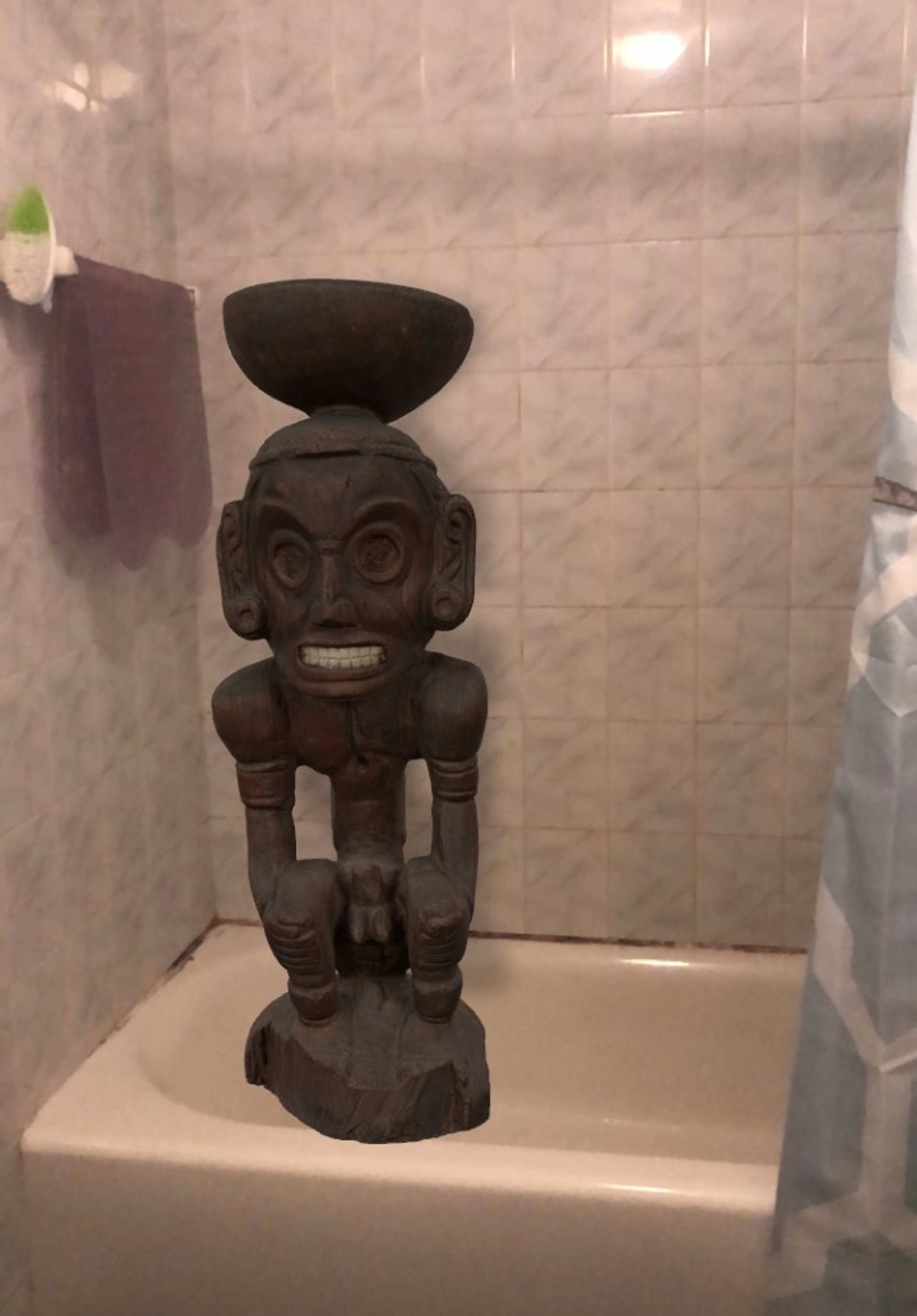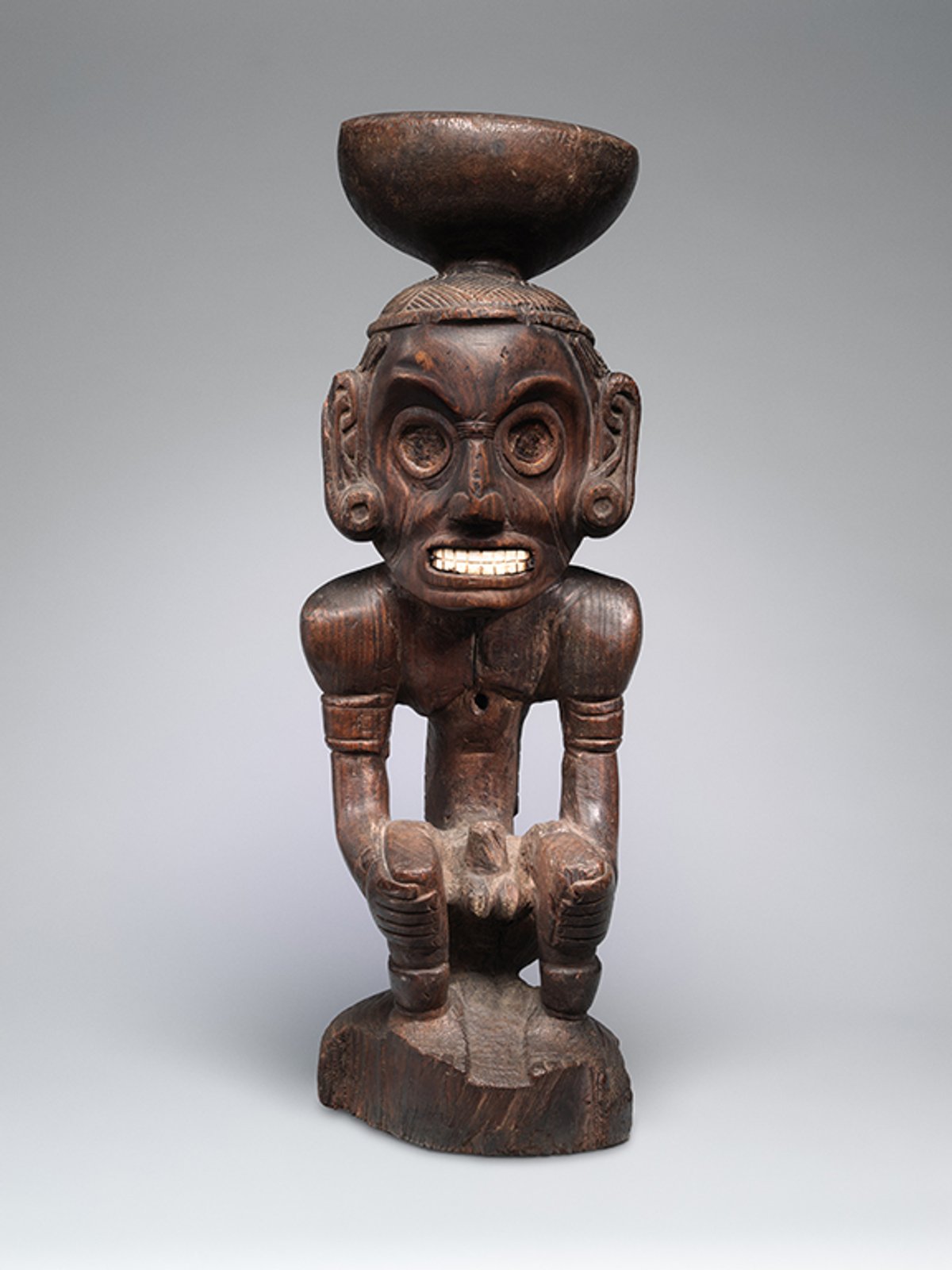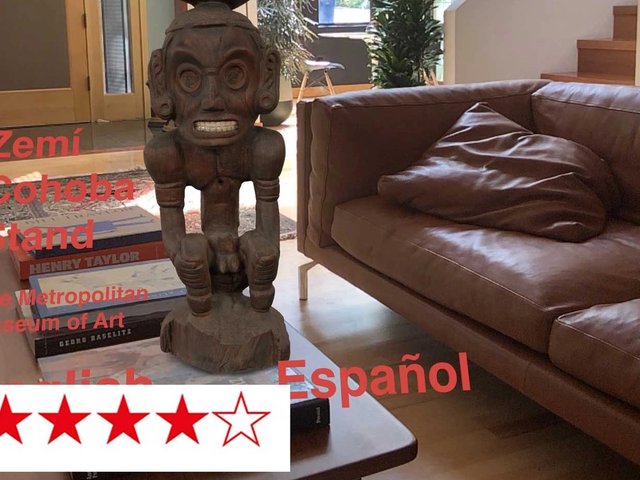The Metropolitan Museum of Art is hastening its push into the augmented reality (AR) arena, enabling users to commune in 3D with a wooden sculpture from its shuttered exhibition Arte del Mar: Artistic Exchange in the Caribbean while listening to a curator’s commentary.
The work of art, dating from around AD1000 and probably originating in what is today the Dominican Republic, was used in Taíno religious ceremonies as a stand on which a hallucinogenic powder or paste known as cohoba would be placed for ritual consumption. The sculpture depicts a zemí, a deity or ancestor, an emaciated grimacing figure with shell-inlay teeth who squats and grabs his shins as tears course from his eyes. It is the centerpiece of the Arte del Mar show, which was interrupted by the Met’s shutdown in mid-March in response to the spread of the coronavirus.
The 9.8-megabyte AR model works on iOS devices, ideally on an iPhone running iOS 13.4.1 or later. Users can download the AR file and project the haunting figure into their surroundings–onto a coffee table, into a shower stall, in the backyard, or in a car, for example–and rotate it by 360 degrees and zoom in and out. (Barbara Bridgers, the head of imaging at the Met, says that she recently used the AR file to experience the weeping zemí in Central Park.) Meanwhile, users can hear the show’s curator, James Doyle, describe the zemí’s power and significance in English or Spanish.

The Metropolitan Museum of Art's zemí cohoba stand, transplanted into a bathtub Sara Kenney
“It’s like having a curator at your shoulder,” says Scott Geffert, general manager for advanced imaging at the museum. “That’s what really makes it work–when you’re listening to him, the technology melts away.”
Geffert said the ability to embed audio and interactivity into an open USDZ image file was a key innovation enabled by an Apple iOS update in late March. Leveraging this new capability, members of the Met’s imaging team working at home in quarantine developed the AR experience around the already digitised figure while using Apple’s free Reality Composer app, and coordinated with Doyle and other colleagues to add the narration.

The Metropolitan Museum of Art's imaging production manager Wilson Santiago works on an AR model of the zemí cohoba stand Metropolitan Museum of Art
Before that, photographs of the ceremonial stand had been taken from hundreds of angles by the Met photographers Oi-Cheong Lee, Heather Johnson and Chris Heins in response to a proposal by Miguel Luciano, an artist in residence from Puerto Rico who plans to incorporate some of the imagery into a work of art related to the museum’s 150th anniversary this year. The Met acquired the sculpture in 1979 through a bequest from Nelson A. Rockefeller.
Doyle says he relishes the idea of people experiencing the sculpture at home. “I like to see the energy redistributed in digital form so it can reach people in their lives today,” he explains. “You can imagine the sculpture arriving in someone’s home in the Dominican Republic and they could hear the story–stuff their grandmother used to talk about, the zemí.”
Bridgers says she is happy that the Met was able to deliver the app despite the shutdown. “What’s wonderful is the ability to dig deep into the resources of the museum while people are sheltering in place and the Met’s doors are still closed,” she says. She notes that online visitors can also peruse a special issue of the Metropolitan Museum of Art Bulletin devoted to art of the early Caribbean and view a video and an array of images from the Arte del Mar exhibition.
The museum has said it will not reopen before 1 July, and some expect that date to be deferred. After staff members return to the museum, Bridgers says that the imaging department will explore the potential for offering additional AR experiences of works of art at the museum.



